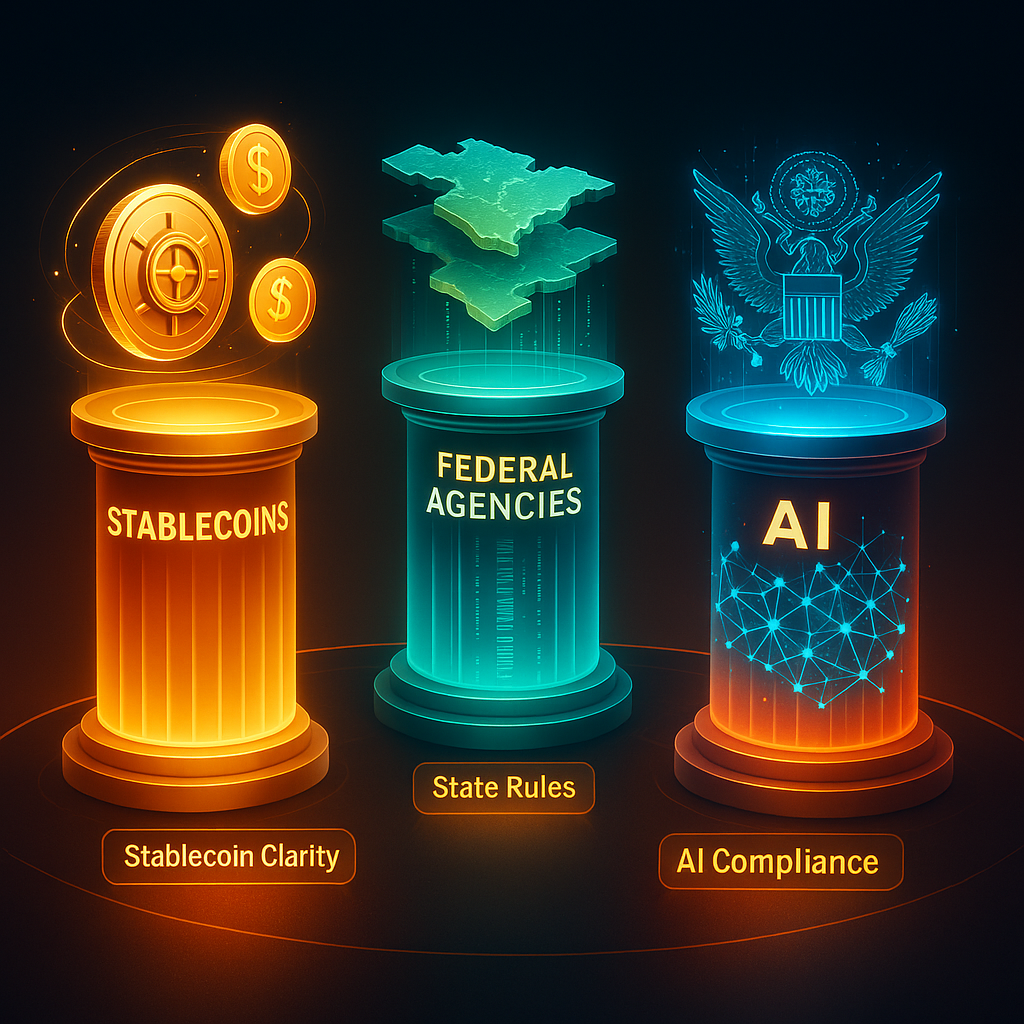Straight Answers for Founders and Builders Navigating KYC, Licensing, and DeFi Risk. A practical guide to the most common compliance questions crypto entrepreneurs face—so you can build with clarity and stay ahead of ever-evolving regulations.
Crypto moves fast. Regulators move slower—but they’re catching up. Whether you’re launching a new token, building an exchange, or scaling your crypto startup, compliance questions aren’t just inevitable—they’re critical. At BitAML, we field these questions every day. This post brings you straight answers to the most frequent ones we hear, helping you build confidently while staying ahead of risk.
What’s Required Now to stay up with AML/KYC?
If your crypto business facilitates financial transactions—whether you’re a token issuer, exchange, or DeFi platform—you’re likely subject to U.S. anti-money laundering (AML) laws. That means you may need to register as a Money Services Business (MSB) with FinCEN and implement a risk-based AML program.
For DeFi projects, the expectation is increasingly clear: if your platform or protocol exercises “sufficient control,” you’re likely viewed as a money transmitter. That triggers responsibilities to verify customer identities (KYC), monitor transactions, maintain mandatory customer and transaction records, and report suspicious activity. Think traditional compliance, adapted for decentralized systems.
To better understand the KYC piece specifically, check out our blog: Deciphering the KYC Conundrum
Crypto money transmitters generally deploy what’s known as risk-based KYC, a practice that refers to the process of tailoring customer identification, verification, and due diligence procedures according to the level of risk each customer presents. Rather than applying a one-size-fits-all approach (think bank account opening), crypto MSBs assess factors such as customer type, transaction behavior, geography, product usage, and source of funds to determine appropriate levels of scrutiny. Higher-risk customers—such as those using privacy-enhancing technologies, engaging in high-volume or cross-border transactions, or operating in high-risk jurisdictions—require enhanced due diligence (EDD), including more detailed information and ongoing monitoring. This approach ensures compliance resources are allocated efficiently while meeting regulatory expectations under the Bank Secrecy Act and FinCEN guidance.
Licenses—What Do You Need to Launch?
U.S.-based businesses offering crypto exchange, custody, or issuance services typically must:
- Register as anMSB with FinCEN, a bureau of the U.S. Treasury
- Obtain state-level money transmitter licenses (MTLs) in each of the states within which they maintain operations and/or serve customers
- Comply with both federal and state AML, consumer protection, and other regulatory requirements
Ignoring state-by-state regulatory requirements has become a top enforcement risk. Earlier this week, Coinme, a crypto ATM operator, was fined $300,000 by California’s DFPI for violating the Digital Financial Assets Law (DFAL) by exceeding daily transaction limits and omitting key consumer disclosures. This marked the first enforcement action under DFAL and sent a clear signal: regulators are watching…and enforcing.
📺 Watch: What is AML Compliance in Cryptocurrency? (YouTube)
When it Comes to Audits & Reporting, What’s Expected?
At a minimum, your compliance program must be reviewed every 12-18 months—either internally or by a qualified third party. (As a matter of best practice, we recommend conducting independent testing annually given the dynamic risk environment in crypto and extra attention from regulators.) Beyond regulatory compliance, institutional partners (think banks, custodians, and payment processors) require these reviews as a condition of doing business.
Modern audits aren’t just checkbox exercises—they’re assessments of functional compliance. That means:
- Compliance with the Four BSA/AML Pillars – Verifies the presence and effectiveness of internal controls, independent testing, a designated BSA Compliance Officer, and ongoing training programs.
- Risk-Based Customer Due Diligence (CDD/EDD) –Assesses whether the institution appropriately risk-rates customers and applies sufficient due diligence, including enhanced procedures for higher-risk relationships.
- Transaction Monitoring & SAR Reporting – Evaluates the effectiveness of systems used to detect, investigate, and report suspicious activity, including timeliness and quality of SAR filings.
- OFAC & Sanctions Screening – Reviews how the institution screens customers and transactions against sanctions lists and ensures appropriate escalation and resolution procedures are in place.
- Governance & Board Oversight – Confirms that senior management and the Board receive regular AML updates and maintain active oversight of the BSA/AML compliance program.
Pro tip: Regulators and partners look favorably on crypto firms that don’t just prep for AML audits/reviews, but have established quality control and quality assurance practices. It shows you take compliance seriously—and that’s good for business.
Navigating DeFi, DAOs, and Gray Zones
Founders often ask: “If I don’t hold the keys, am I responsible?” Unfortunately, the answer isn’t always clear-cut. If your DAO, smart contract, or governance structure gives someone (even a multisig) control over user funds or processes, you may still meet the definition of a money transmitter in certain juridictions—and that comes with regulatory responsibilities.
The decentralized nature of DeFi doesn’t automatically exempt you from compliance. In fact, U.S. regulators have signaled that “decentralization theater”—where a project appears decentralized but is actually operated or influenced by a core team—won’t shield you from enforcement. If there’s a front-end interface, developer team, or governance structure making meaningful decisions, you’re likely in the compliance zone.
Disclosures matter, too. If you’re planning a token launch or staking pool, you’ll need to clearly communicate how funds are used, what risks users face, and how (or if) funds can be recovered in the event of loss. Think through AML obligations from day one—especially if U.S. users are in your target market.
For DAOs, it’s smart to treat your operations like a traditional business when it comes to compliance. Keep records. Document decisions. Identify key participants. And be cautious about multisig structures where only a handful of insiders hold control.
The gray zones in crypto are getting less gray by the day, as regulators catch-up, states pass legislation, and the industry itself matures to meet its compliance obligations. Smart founders aren’t looking for loopholes—they’re looking for certainty.
Compliance Continues to Be an Essential Element
“If you’re building in crypto, you’re probably a financial institution whether you know it or not.”
Crypto compliance is no longer a back-office burden—it’s a strategic advantage. Founders who build with compliance in mind earn trust faster, scale smarter, and sleep better at night.
At BitAML, we help crypto businesses stay ahead of complex regulations without losing their edge. If you’re navigating these issues or unsure where you stand, let’s talk. Schedule a complimentary discovery call with our team. Let’s protect crypto’s future—and your business.


